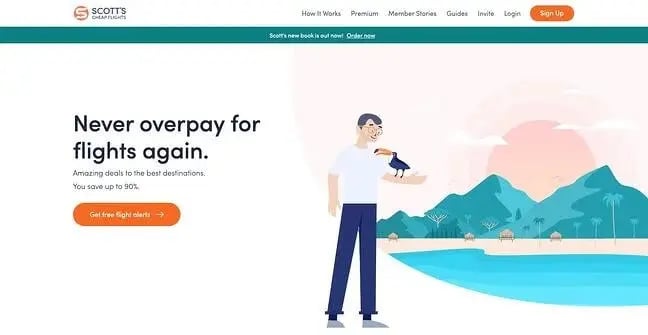Why Website Design Matters for Building a Strong Online Brand
Why Website Design Matters for Building a Strong Online Brand
Blog Article
Modern Internet Site Style That Captures Focus and Transforms
In an increasingly digital landscape, modern-day website layout has actually become a crucial consider recording user interest and driving conversions. By tactically utilizing aesthetic pecking order, responsive formats, and engaging interactive components, designers can develop experiences that not only bring in visitors however also promote significant communications. Efficient call-to-action approaches play an important duty in guiding individuals towards desired results. As we check out these essential elements, it comes to be clear that understanding their interplay can dramatically impact a web site's efficiency and user contentment. What are the crucial components that truly make a difference?
Importance of Visual Pecking Order
Aesthetic pecking order is an important component in website layout, as it overviews individuals' attention and enhances their total experience. By tactically organizing material, designers can guide customers to the most vital details initially, thus increasing involvement and enhancing usability. Reliable visual hierarchy uses different techniques, consisting of size, shade, contrast, and spacing. Bigger aspects normally draw the eye, while contrasting shades can highlight key messages, making them attract attention among even more controlled components.
Including a logical circulation in web content arrangement is vital; as an example, positioning the most essential information at the top of a page cultivates immediate acknowledgment. In addition, constant use of typography, such as differing font sizes and designs, assists develop a clear content structure. This organization not only aids in navigation but likewise develops count on, as customers feel extra comfy when they can conveniently locate what they are searching for.
Inevitably, a well-executed visual pecking order not just enhances aesthetic allure yet additionally significantly affects user actions. By focusing on crucial elements and making sure a seamless experience, developers can properly transform site visitors into customers, strengthening the importance of this fundamental design principle in modern-day site development.
Responsive Design for All Instruments
Producing a smooth experience across different devices is vital in today's digital landscape, where individuals gain access to internet sites from mobile phones, tablets, and desktop computers alike. Responsive design is an important approach that makes sure web sites adjust fluidly to various screen dimensions, orientations, and resolutions. By employing flexible grids, images, and CSS media questions, developers can develop layouts that preserve aesthetic honesty and capability, no matter the gadget being used.
The value of responsive style extends beyond visual appeals; it directly impacts individual interaction and conversion rates. A website that functions well on all devices encourages longer visits and lowers bounce prices, as customers are a lot more likely to connect with material that is simple to navigate. Search engines, especially Google, prioritize mobile-friendly websites in their positions, making receptive design an essential element of search engine optimization (SEO)
Integrating responsive layout not just boosts individual experience yet likewise simplifies the development process. By developing a single site that functions across gadgets, organizations can save time and resources compared to establishing separate mobile and desktop computer versions. Eventually, responsive layout is a basic technique for modern internet site layout, making certain access and fulfillment for all users, regardless of their gadget.
Involving Interactive Elements
While a receptive layout lays the groundwork for a useful website, incorporating interesting interactive components is essential for capturing individual focus and fostering much deeper connections. Website Design. Interactive aspects, such as computer animations, tests, and clickable infographics, produce an extra dynamic user experience, urging visitors to spend even more time on the site
Incorporating interactive attributes can also guide customers via complex info, making it easier to digest material. As an example, interactive sliders can highlight item variants, while ingrained videos can give presentations or testimonials that resonate greater than fixed pictures or text. view Gamification strategies, like benefits for finishing jobs or involving with material, can improve user inspiration and retention.
Efficient use interactive elements not only enriches the customer experience however can likewise bring about higher conversion rates. By making communications interesting and pleasurable, businesses can cultivate a sense of loyalty and trust fund with their target market. Nevertheless, it is crucial to stabilize interactivity with efficiency; extremely complicated attributes may impede website speed, adversely impacting user satisfaction. Inevitably, incorporating properly designed interactive elements can considerably elevate a site's efficacy, driving engagement and conversions in today's competitive digital landscape.
Structured Navigation Practices
Efficient navigating is a cornerstone of any type of successful website, as it directly affects individual experience and web content ease of access. Structured navigating techniques make sure that customers can easily situate information, boosting their communication with the website. A well-structured navigation food selection ought to be basic and instinctive, commonly featuring a restricted number of primary classifications to prevent frustrating visitors.
To achieve structured navigation, developers should prioritize an ordered framework that practically arranges content. Carrying out breadcrumb routes can provide individuals with context about their Discover More present place within the site, enabling seamless backtracking. In addition, utilizing drop-down menus can properly conserve room while still providing accessibility to subcategories.
Responsive style is vital, as navigation must be practical throughout all gadgets (Website Design). Mobile users, particularly, benefit from touch-friendly menus and collapsible sections that preserve usability without compromising appearances

Reliable Call-to-Action Techniques
A well-crafted call-to-action (CTA) is necessary for leading users towards preferred outcomes on a web site, as it encourages them to involve with content or buy. To optimize their efficiency, CTAs need to be clear, compelling, and purposefully placed throughout the site.
First, use action-oriented language that connects necessity or worth, such as "Start," "Sign up with Now," or "Case Your Price cut." This language not just inspires individuals however also establishes clear assumptions concerning the next actions.
Second, take into consideration style components; CTAs need to stand apart visually via contrasting colors, enough whitespace, and popular positioning. A button that is very easy to see and click increases the probability of customer interaction.
Additionally, customizing CTAs based upon customer actions or demographics can substantially boost involvement. Customized messages resonate much more with individuals, driving greater conversion prices.

Verdict
In conclusion, modern internet site design stresses the integration of visual pecking order, receptive formats, engaging interactive elements, streamlined navigation, and efficient call-to-action approaches. These components collectively enhance user experience, making sure that site visitors continue to be involved and motivated to explore material additionally. By focusing on these layout concepts, businesses can dramatically improve user retention and conversion rates, eventually bring about better success in the digital landscape. The continuous evolution of web style highlights its essential role in effective online communication and marketing.
In an increasingly electronic landscape, modern-day web site layout has actually arised as a pivotal element in catching individual interest and navigate to these guys driving conversions.Aesthetic power structure is a crucial component in internet site layout, as it guides individuals' interest and boosts their general experience.The relevance of receptive design prolongs beyond aesthetic appeals; it directly impacts individual interaction and conversion prices.Integrating responsive layout not only boosts individual experience yet likewise streamlines the growth procedure. Ultimately, receptive design is a basic technique for modern-day web site layout, making sure availability and fulfillment for all individuals, no matter of their device.
Report this page